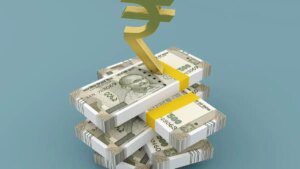Praveen Jagwani, CEO, UTI International
How foreign investors are looking at India?
India is not on their radar because they are too much consumed by the excitement of the tech rally, the magnificent 7 or now the magnificent 10, there is no bandwidth for them to evaluate any other market or asset class. They have been rewarded so much by the rally in US equities. They have not lost anything by missing out on India. In last two years, FPI flows have been net negative and India’s equity market has gone sideways. Even if they had invested, they would not have gained much. India is still trading at 22 times its earning against the long term average of 17. In contrast, US equity markets are near to all-time highs.
India is not a big portion of global indices. America’s market cap is 49 per cent of the global market cap and its weight in MSCI’s All Country World Index is 65 per cent. In contrast, India’s market cap of roughly $5 trillion is 4 per cent of the global market cap, but its weight in the index ACWI is only 2 per cent. The world is investing only 66 basis points in India against its ACWI weightage of 2 per cent. The entire FPI investment of $820 billion in India is only 66 basis points of the total market cap of the world. India is underinvested mostly because it is not a tech play. Investors are interested only AI, rare earths, R&D in tech, chips and data centres. So India is in the shadows.
Is the AI boom similar to dotcom burst?
It is obvious that the math does not add up. The investments gone into creating infrastructure for AI and data centres will be remunerative only if the returns from top tech companies – Meta, Microsoft, Open AI, Oracle – touch almost $4 trillion. It is not going to happen in a hurry. The world is willing to be fooled by business models like open AI. An open AI company that has no profits claiming a valuation of a trillion dollars in IPO and the world believes that is fair. The frothy bubble. may continue for a few more months because I do not yet see the catalyst that will prick this bubble. An early investor in an open AI company revealed that it is losing $12 billion on its 33 per cent stake. If one-third of the company is losing that much, then the overall loss of the company may be three times. However, investment bankers and tech experts are convinced that this kind of company deserves a trillion-dollar valuation.
Is UTI International attracting investment from overseas?
We helps global investors from 41 countries to invest in India, based on its long term story based on growing middle-class and a consumption boom. Year to date, we would have received an inflow of about $100 million from Europe, UK, the GCC, Japan and Singapore and returns have been flat. We have asset under management of about ₹27,000 crore and our target is to double in next three years as corporate earnings improve and valuations become more normalised.
Do you see a reversal in FPI flows in India?
Flows into India will pick up only if the US markets fall sharply. Some of the flow that was directed to emerging markets has flown to India as it is 17 per cent of the EM index. The flow to emerging markets were also AI related plays such as semiconductor play in Taiwan, Korea and rare earths in China.
Will India attracting investments in semiconduct and semiconductor impress FPIs?
Whatever investments are being made in India are too little and too late to be meaningfully competitive on a global platform. Interest on India will return only if the US markets correct. S&P 500 has largely been a momentum play and to that extent, India is a contrarian play.
Will US Fed cut rates?
The Fed is in a trap. The single biggest reason that the S&P is at lifetime highs is the incessant infusion of liquidity in the system for the last 14 years. Ever since the financial crisis of 2008 the Fed has been pumping in liquidity and its balance sheet grew from $3.6 trillion to $9 trillion. It came off to about $7 trillion, but that is still twice the size of the Fed balance sheet in 2008. All that money has gone to create asset bubbles in real estate and equity markets. If Fed embarks on quantitative easing in December, the equity markets will rise even higher and the bubble will not burst. The common man in America is finding it difficult to make ends meet. The top 20-30 per cent is just about managing their consumption, and the bottom 50 per cent is positively struggling. The most relevant thing is $2,000 helicopter money that Trump is promising. People will live out it for 2-4 months. If the Fed increases rates, it will hurt the already weak economy and if it cuts it will be inflationary.
Published on November 19, 2025










